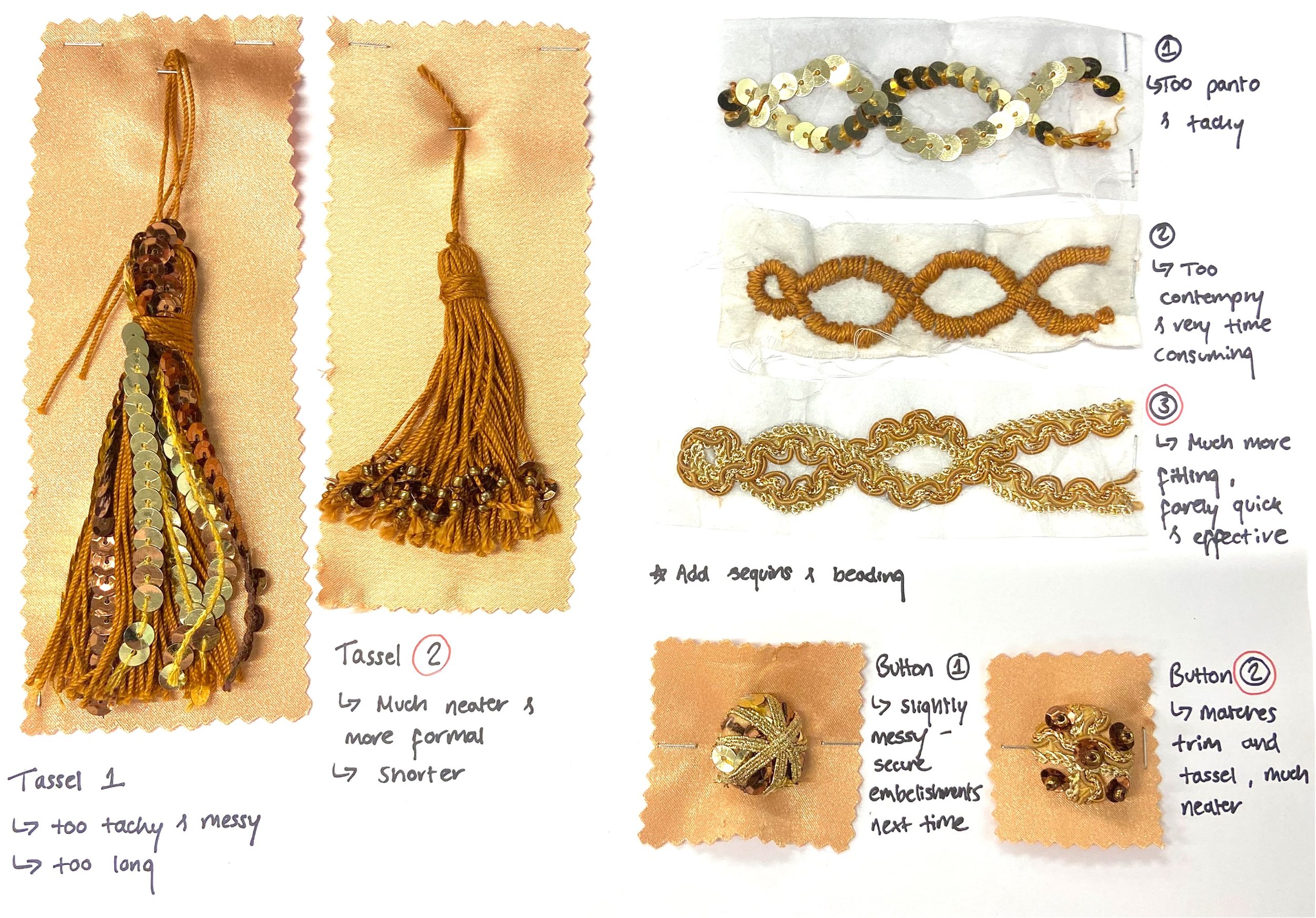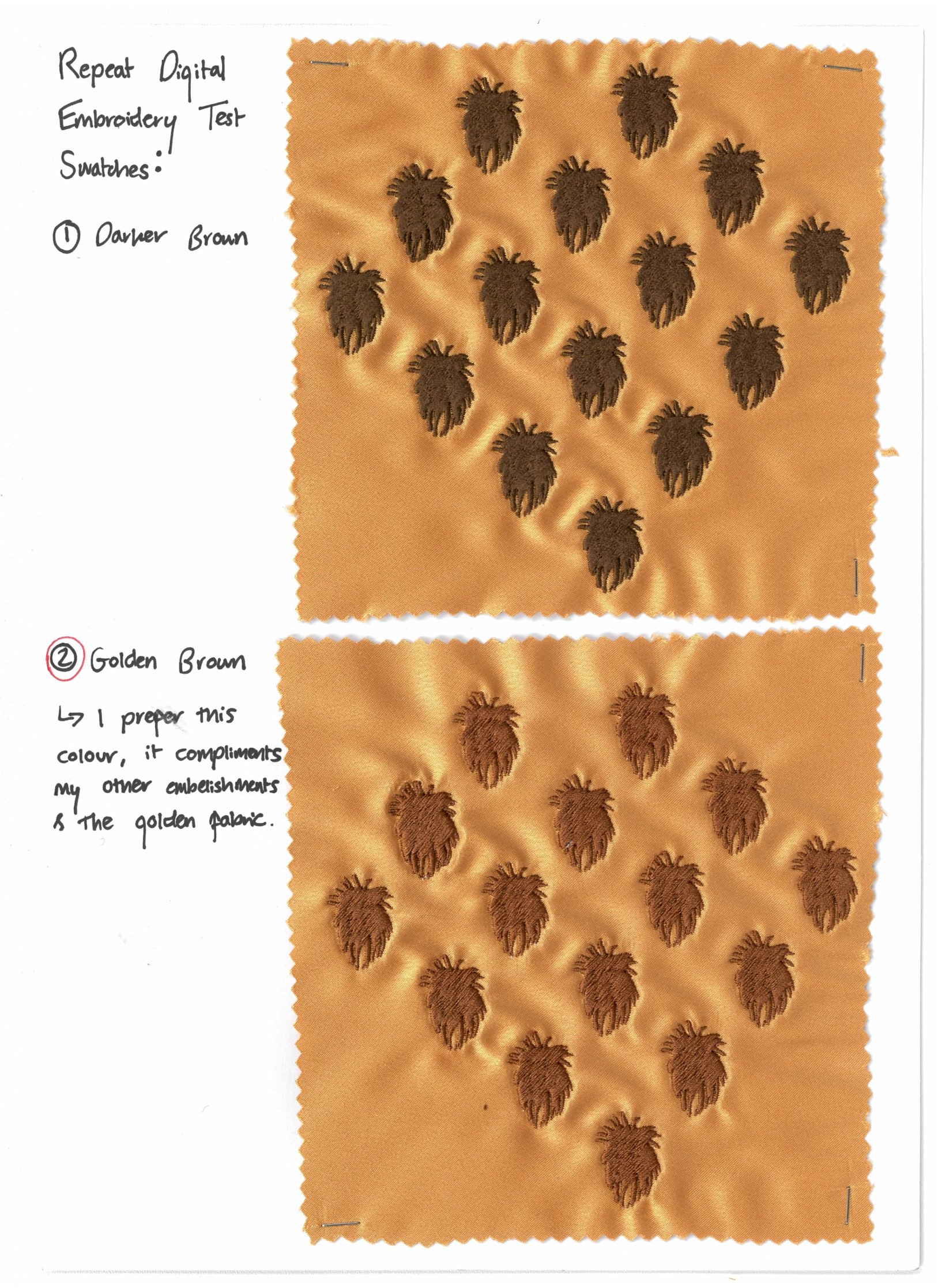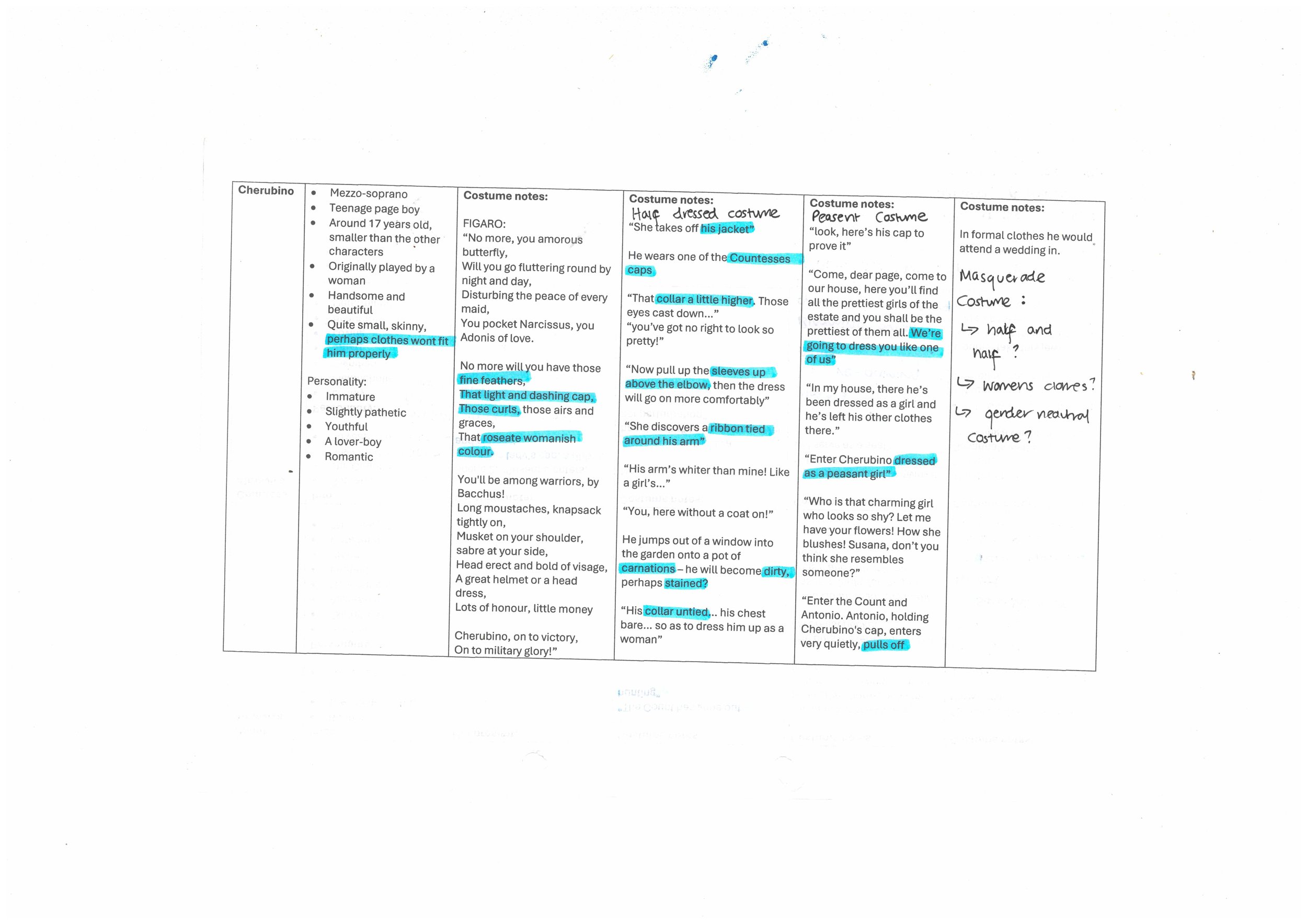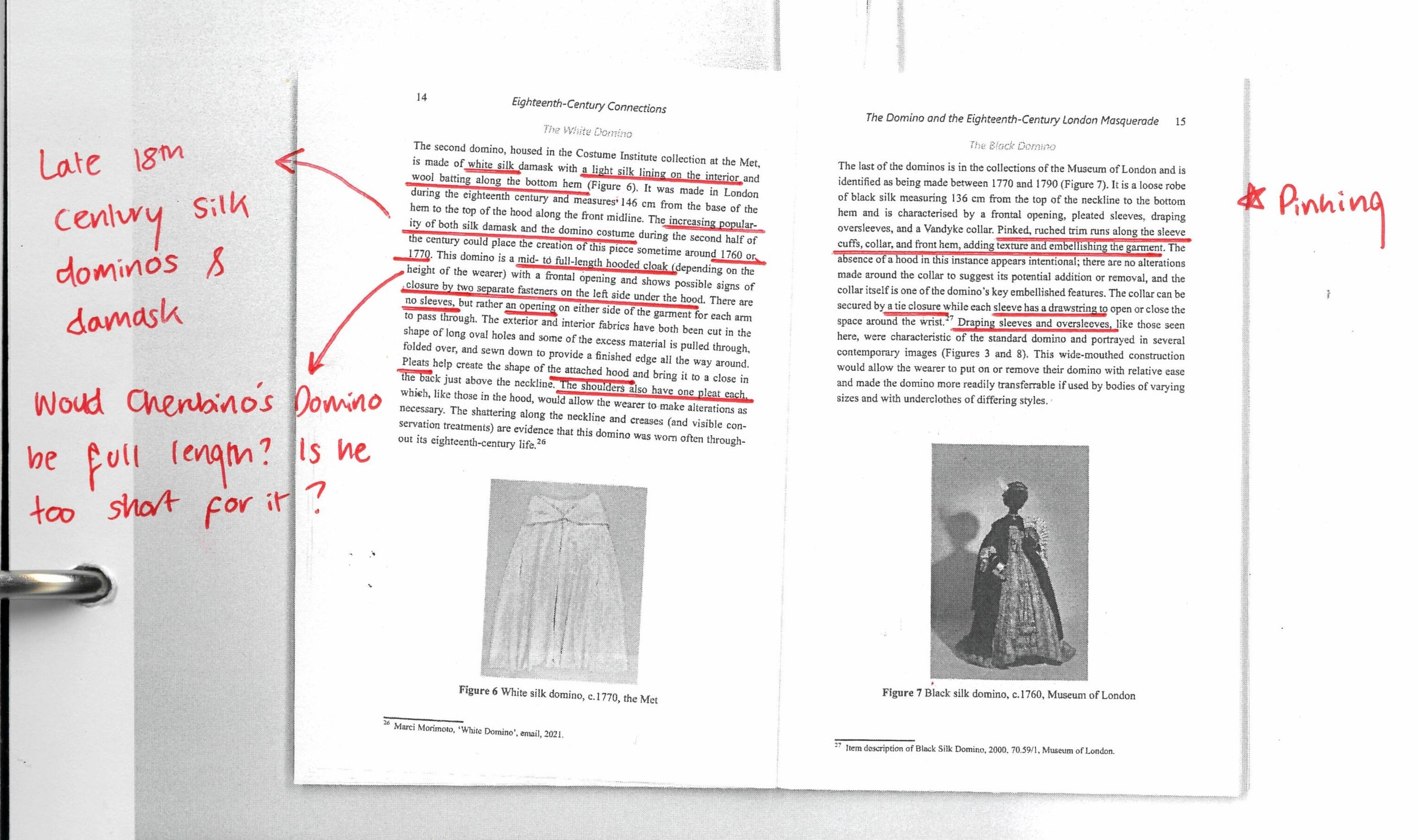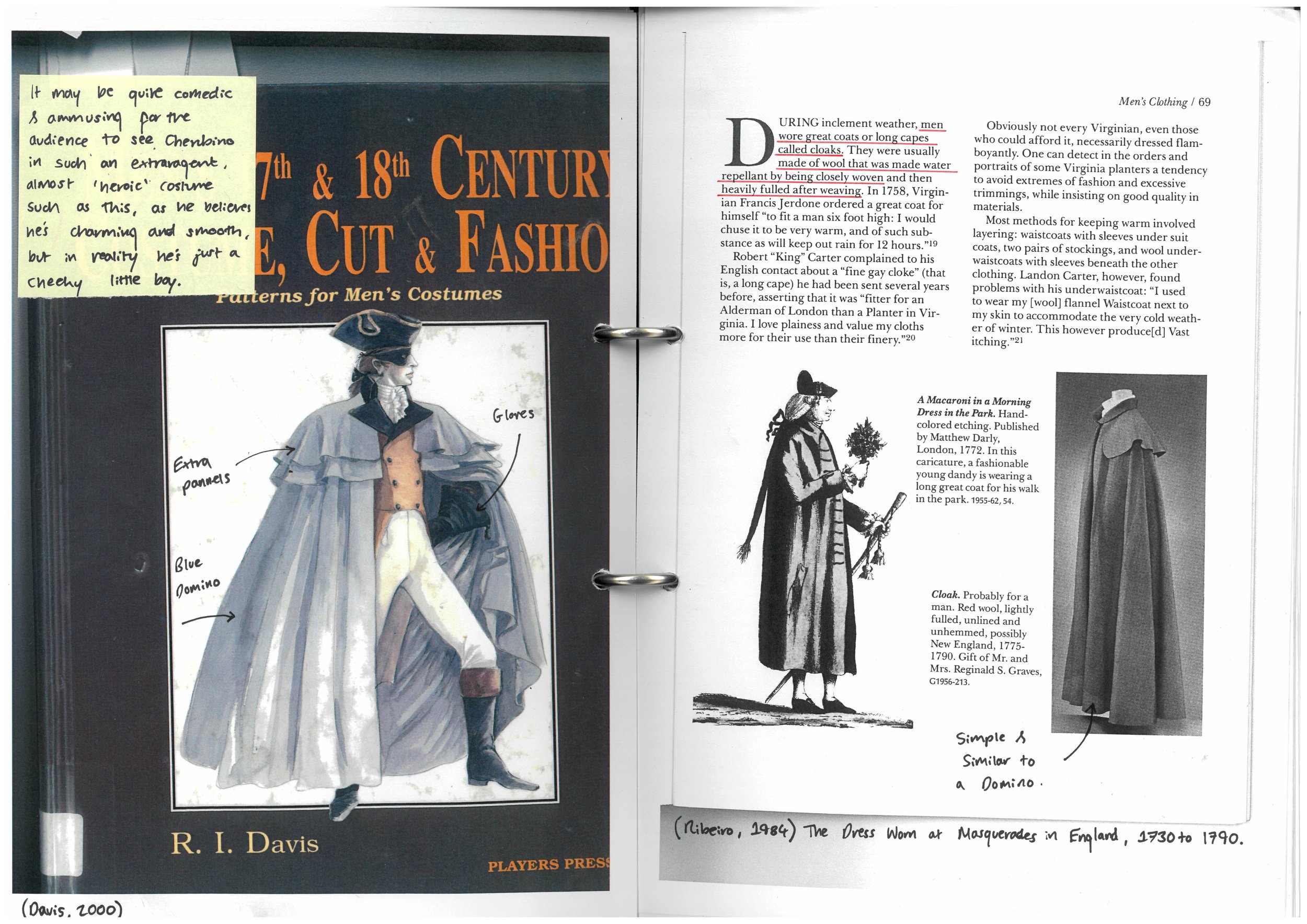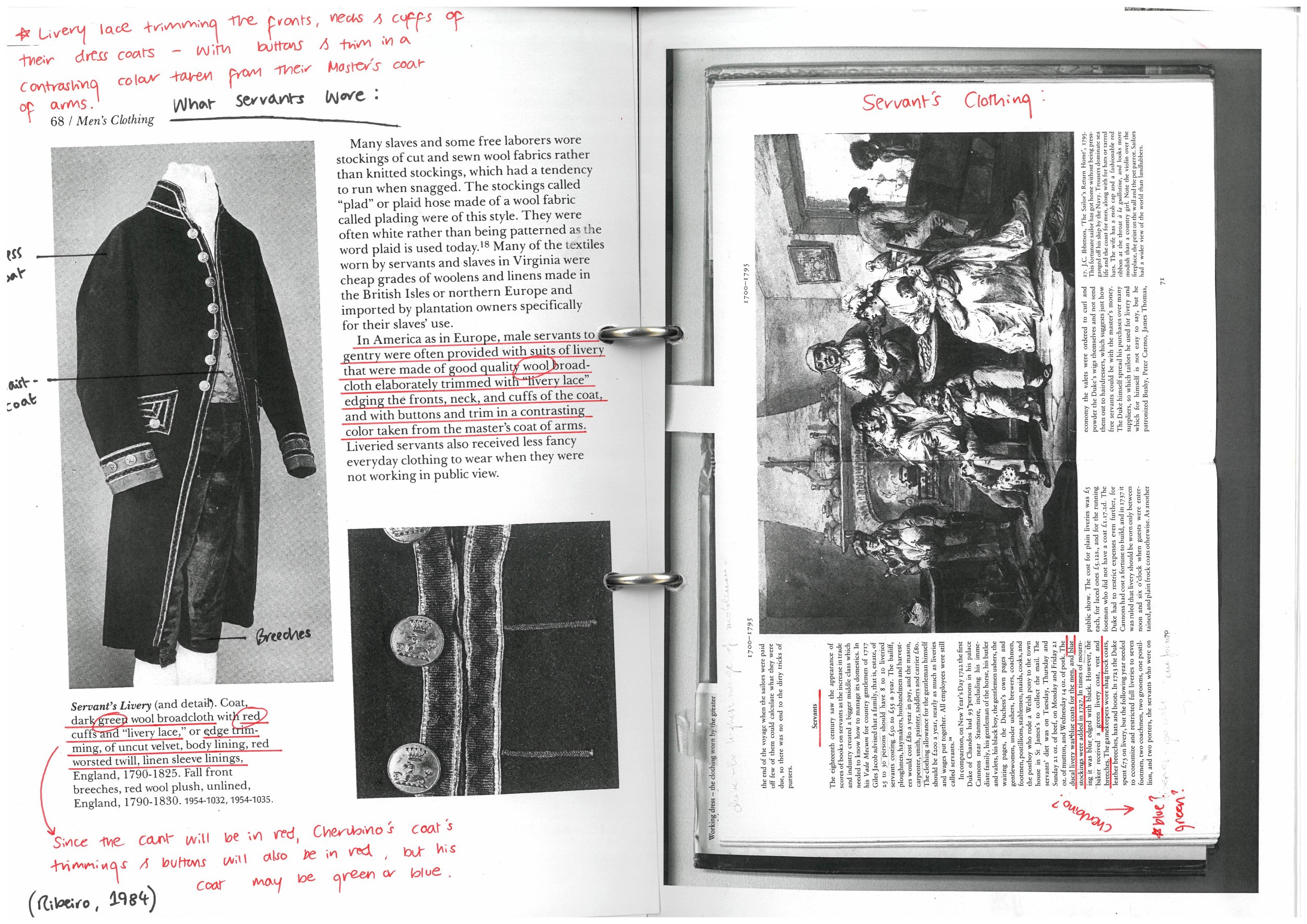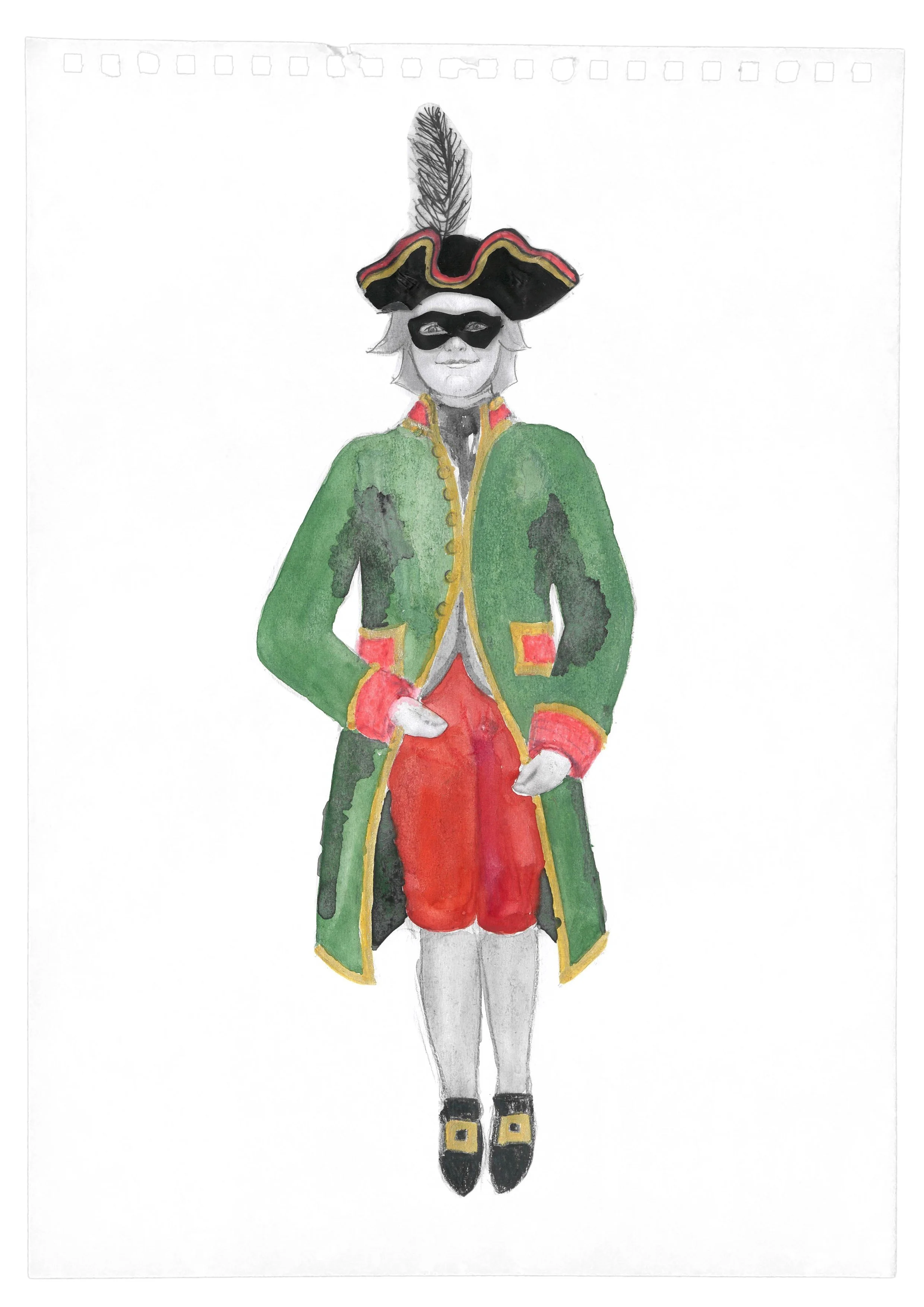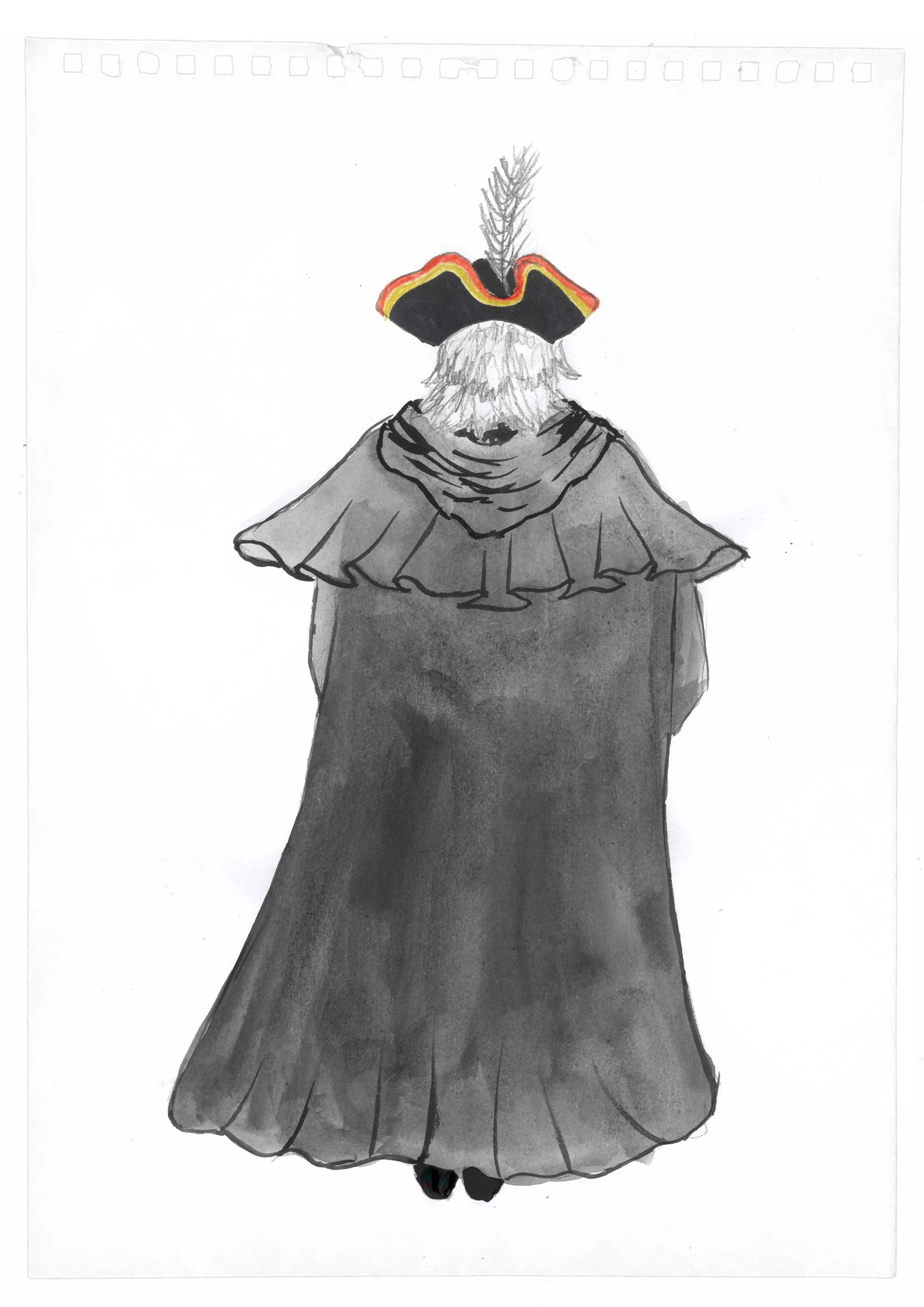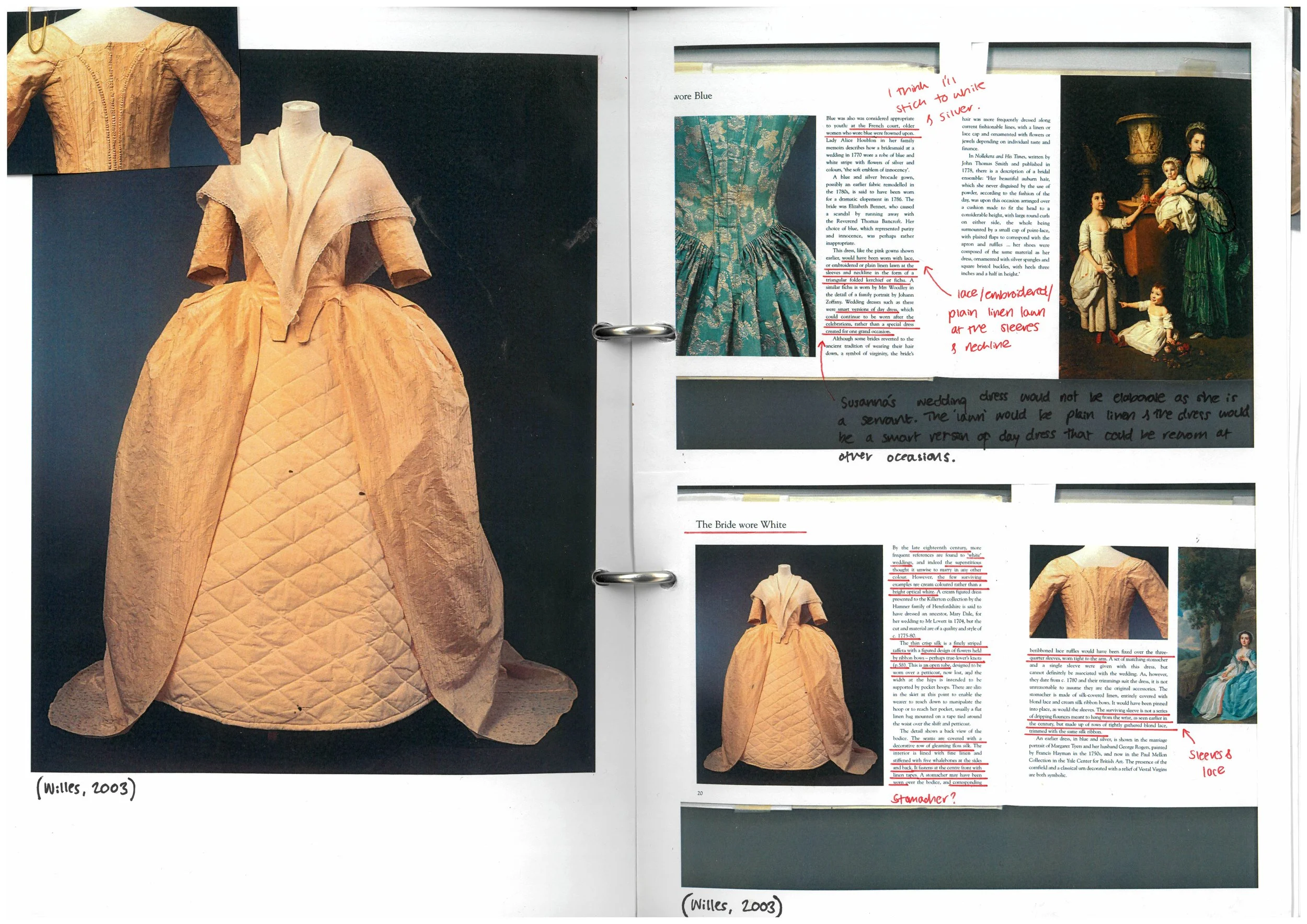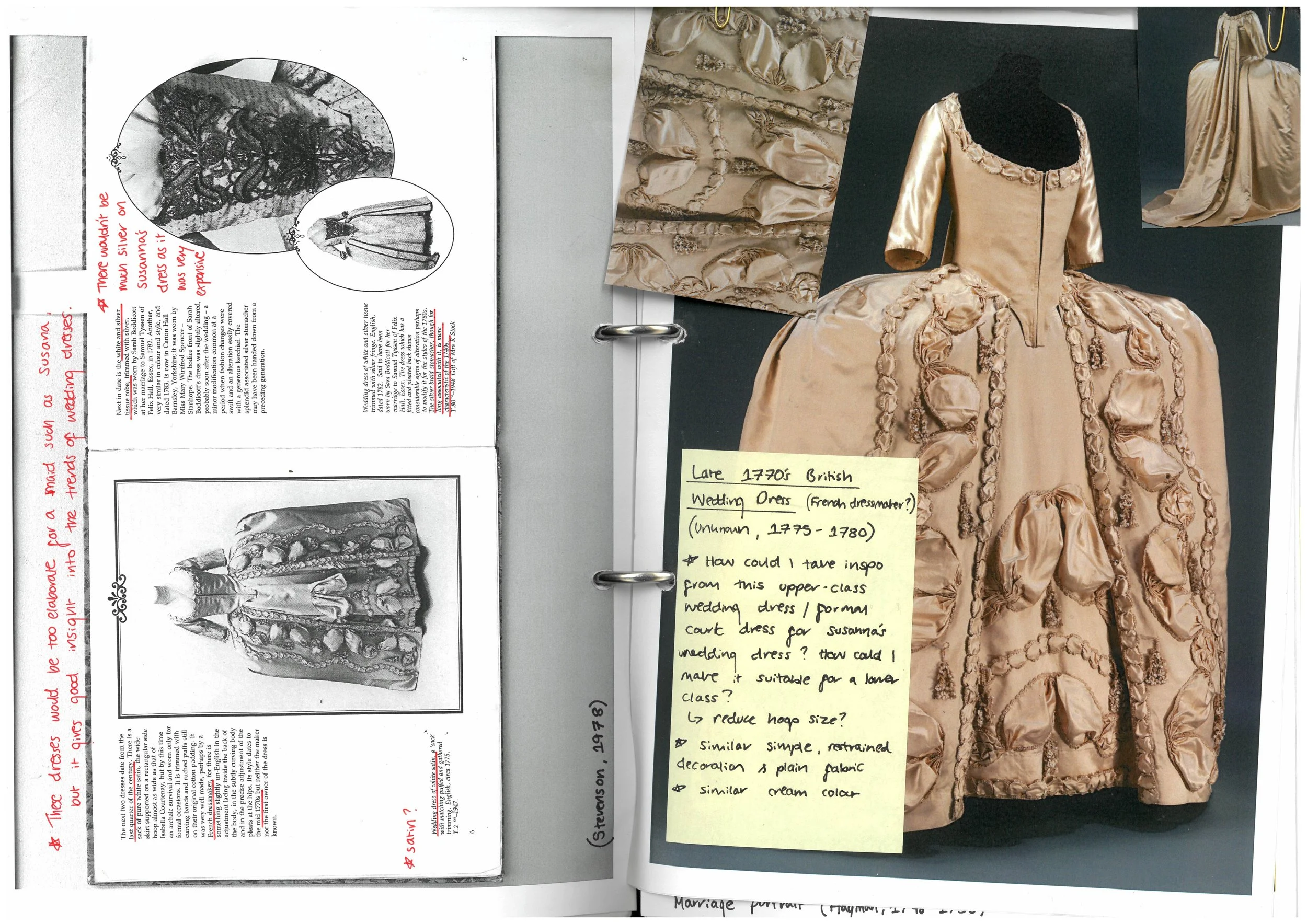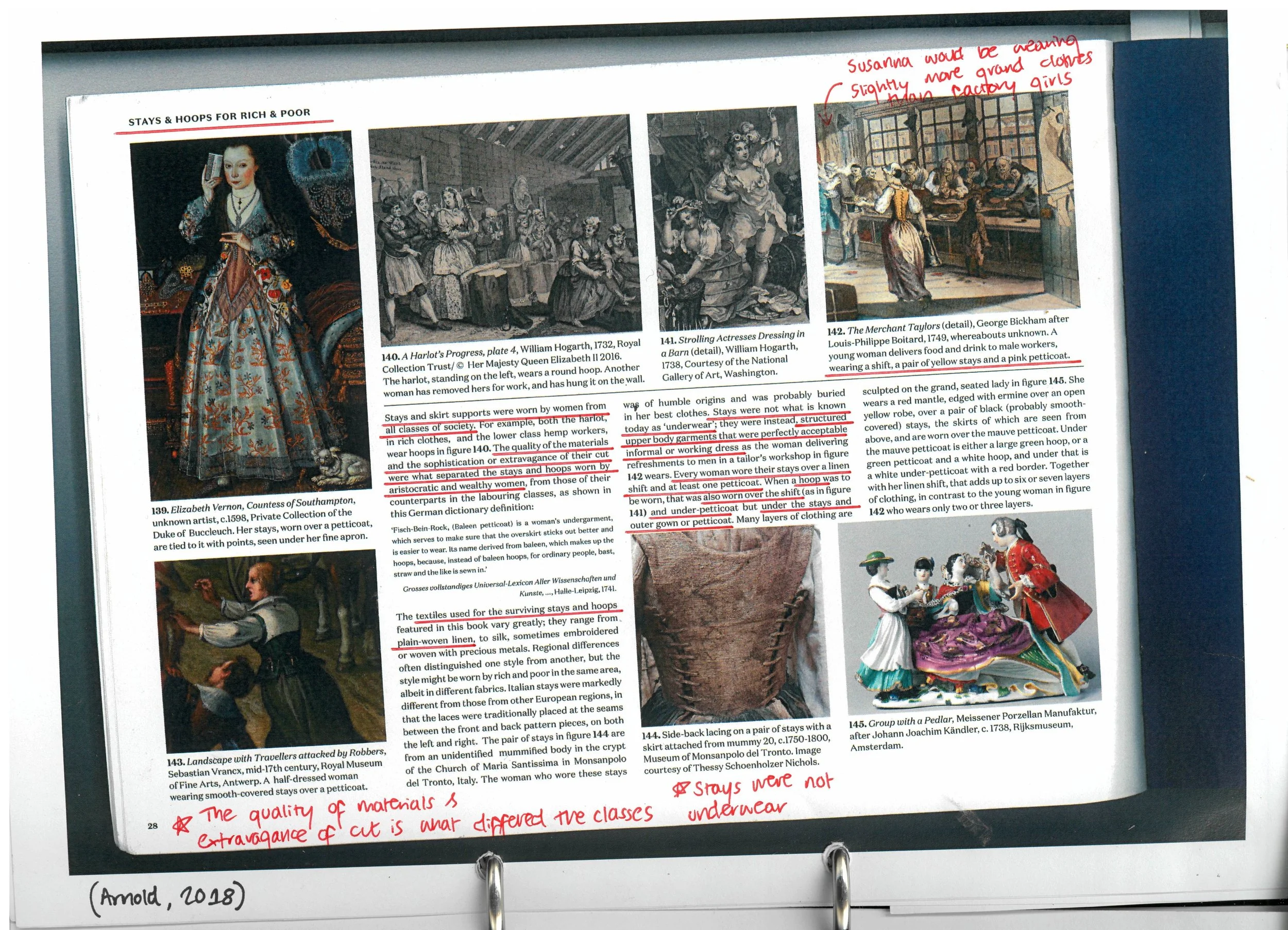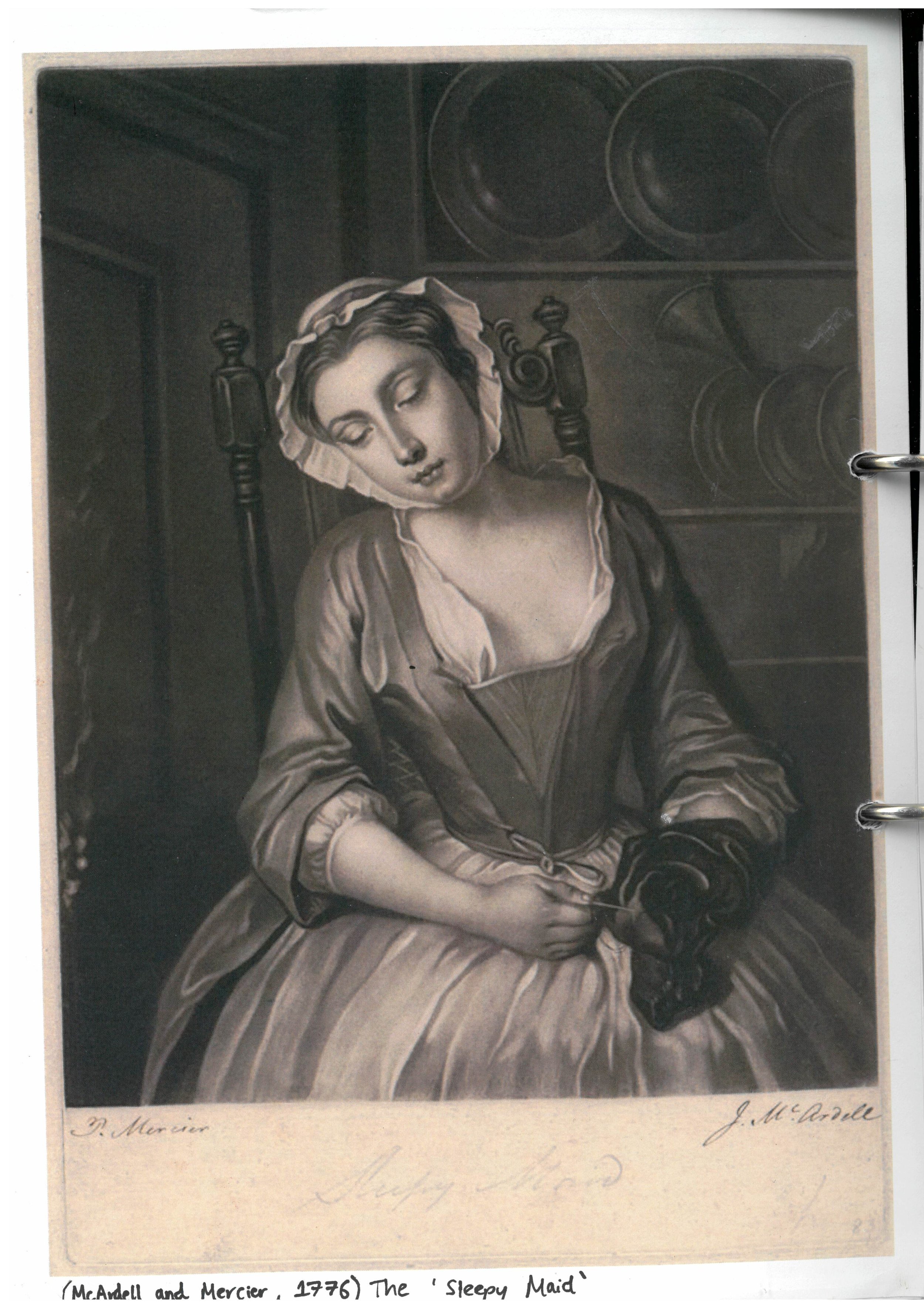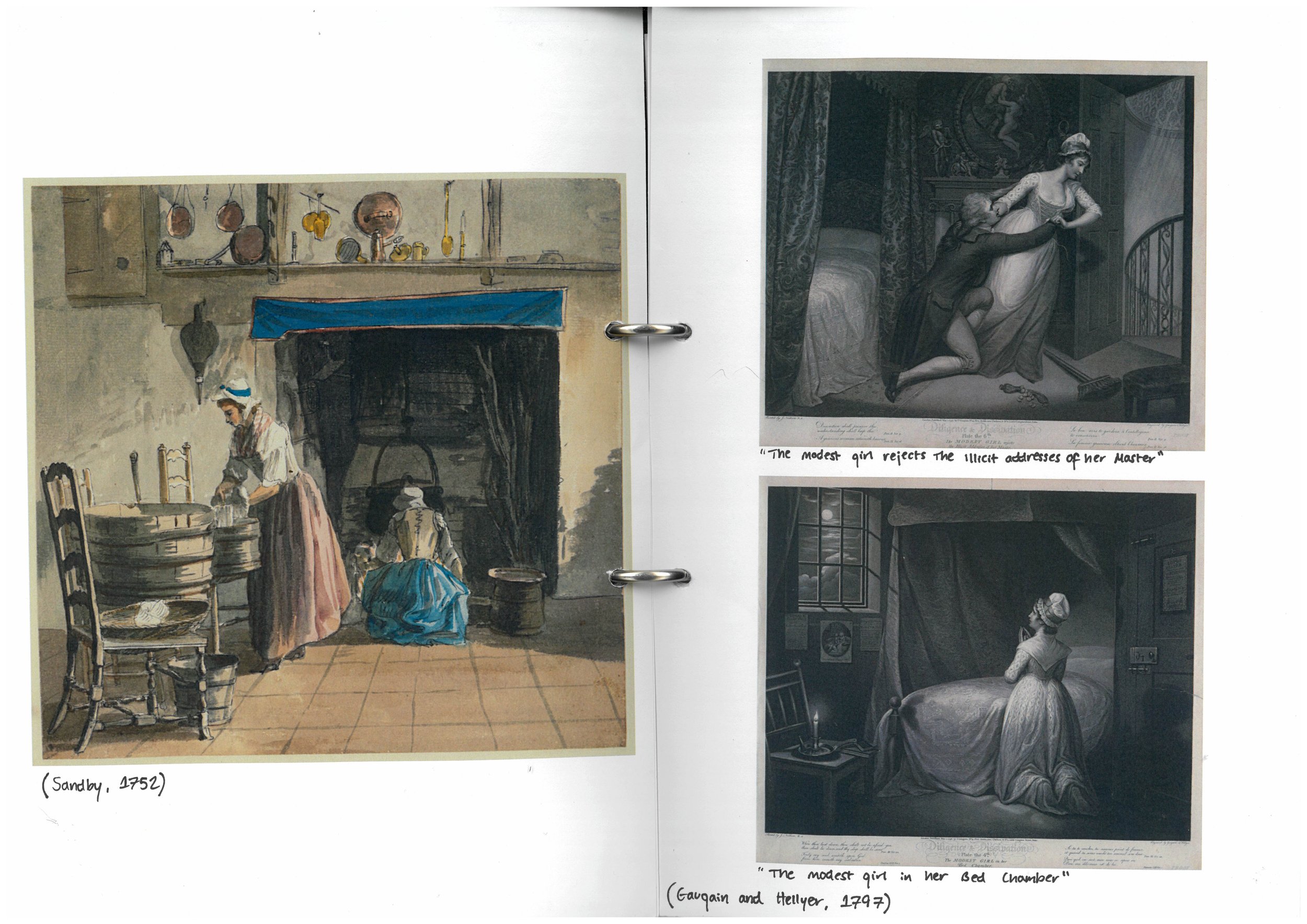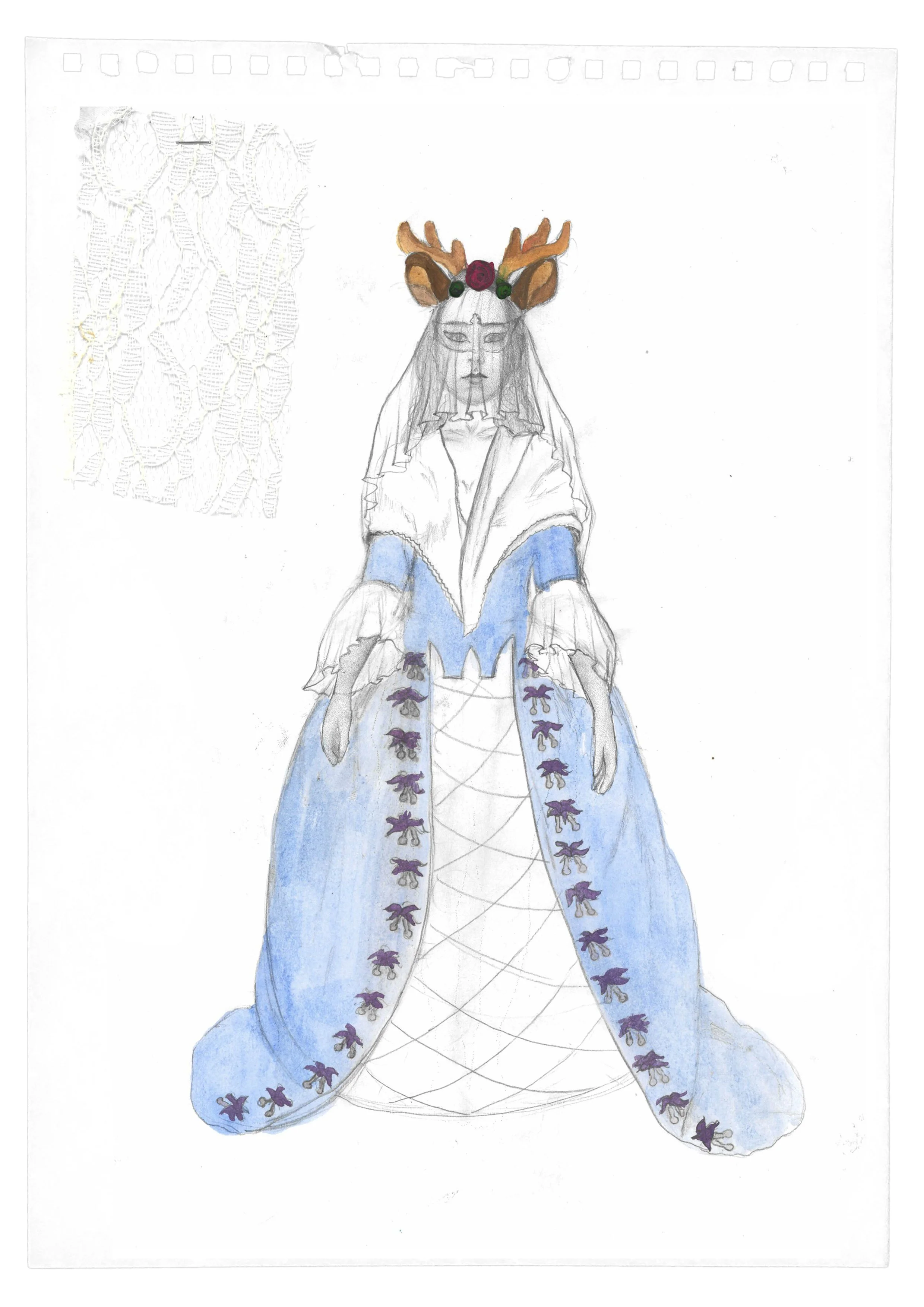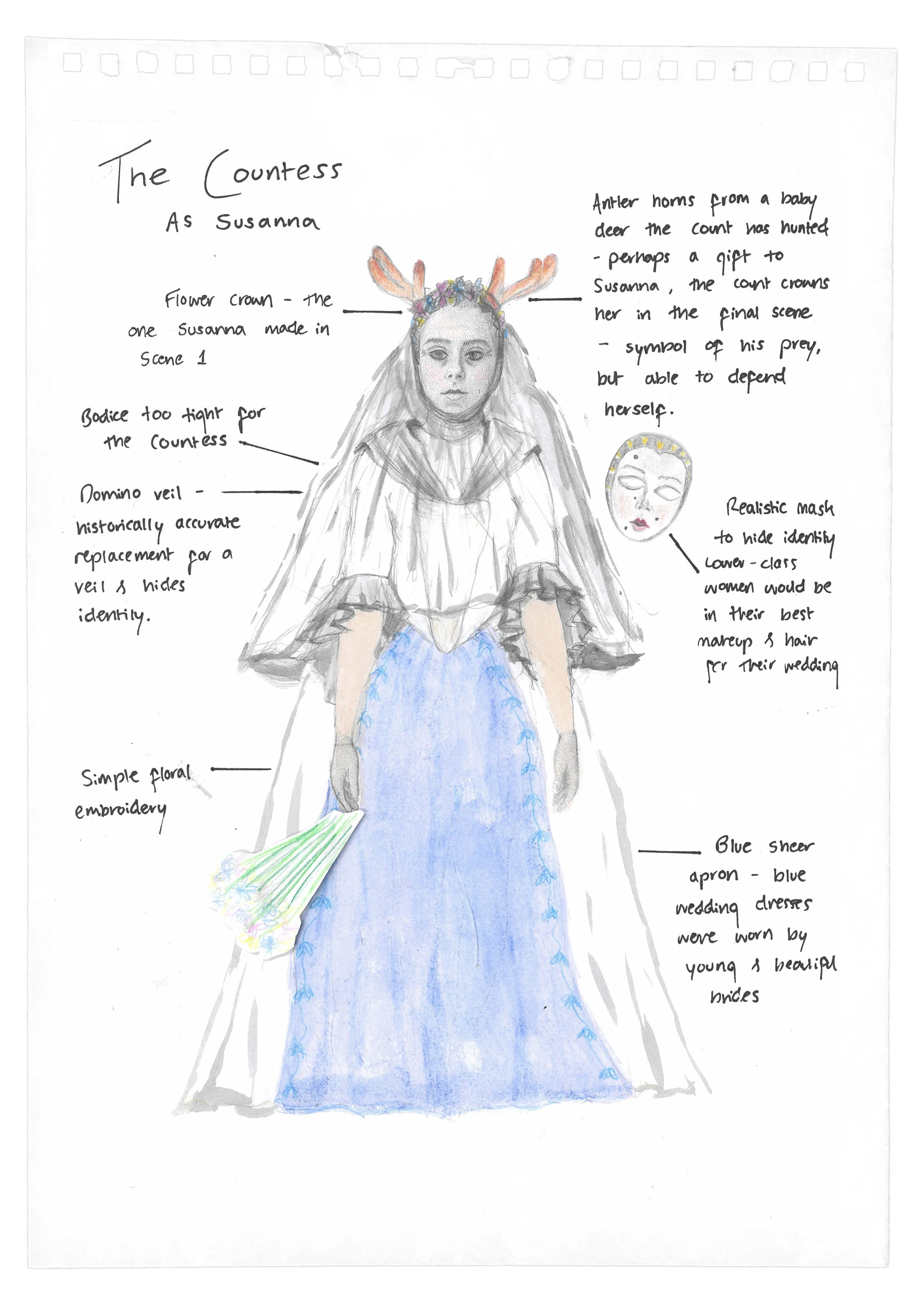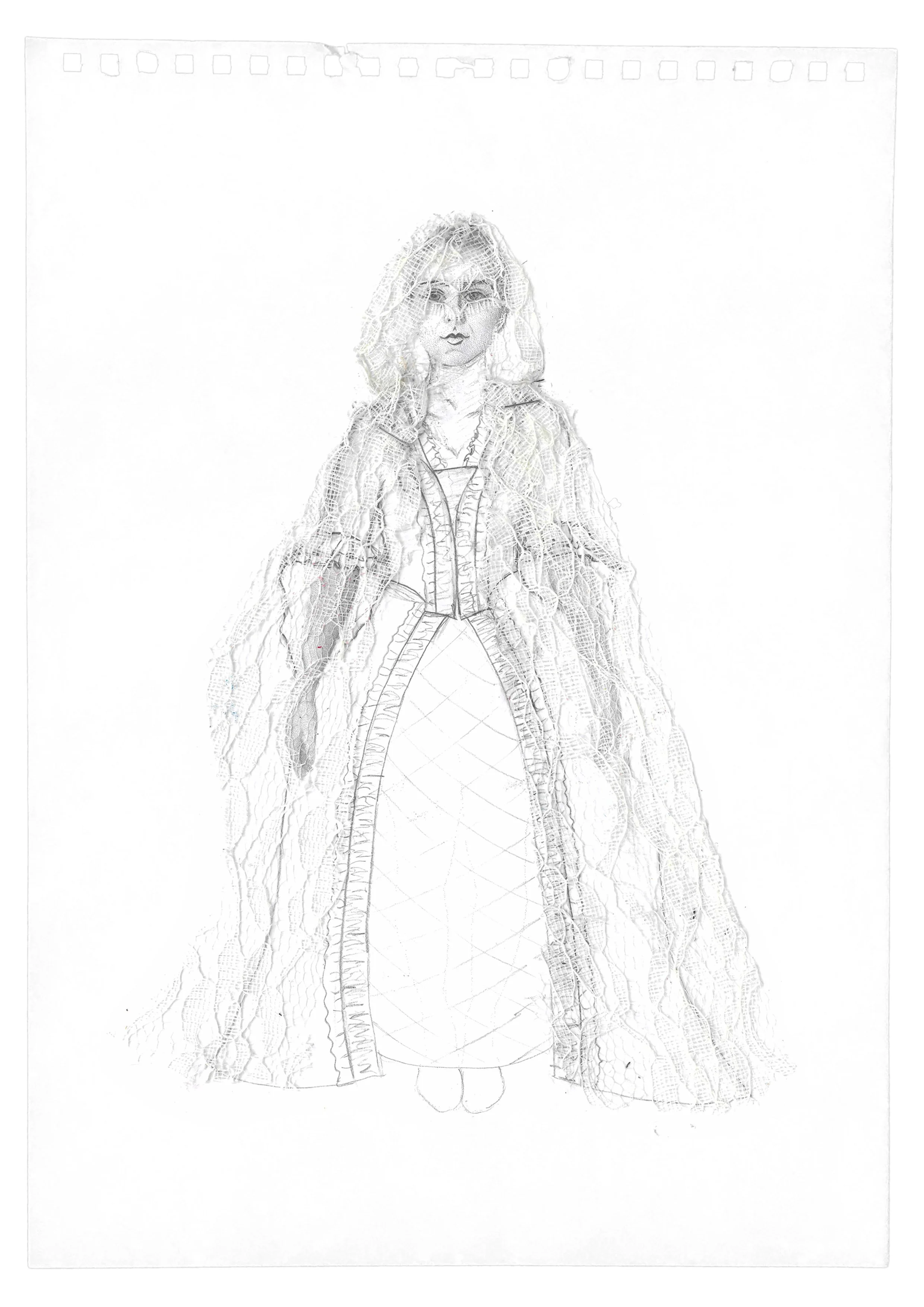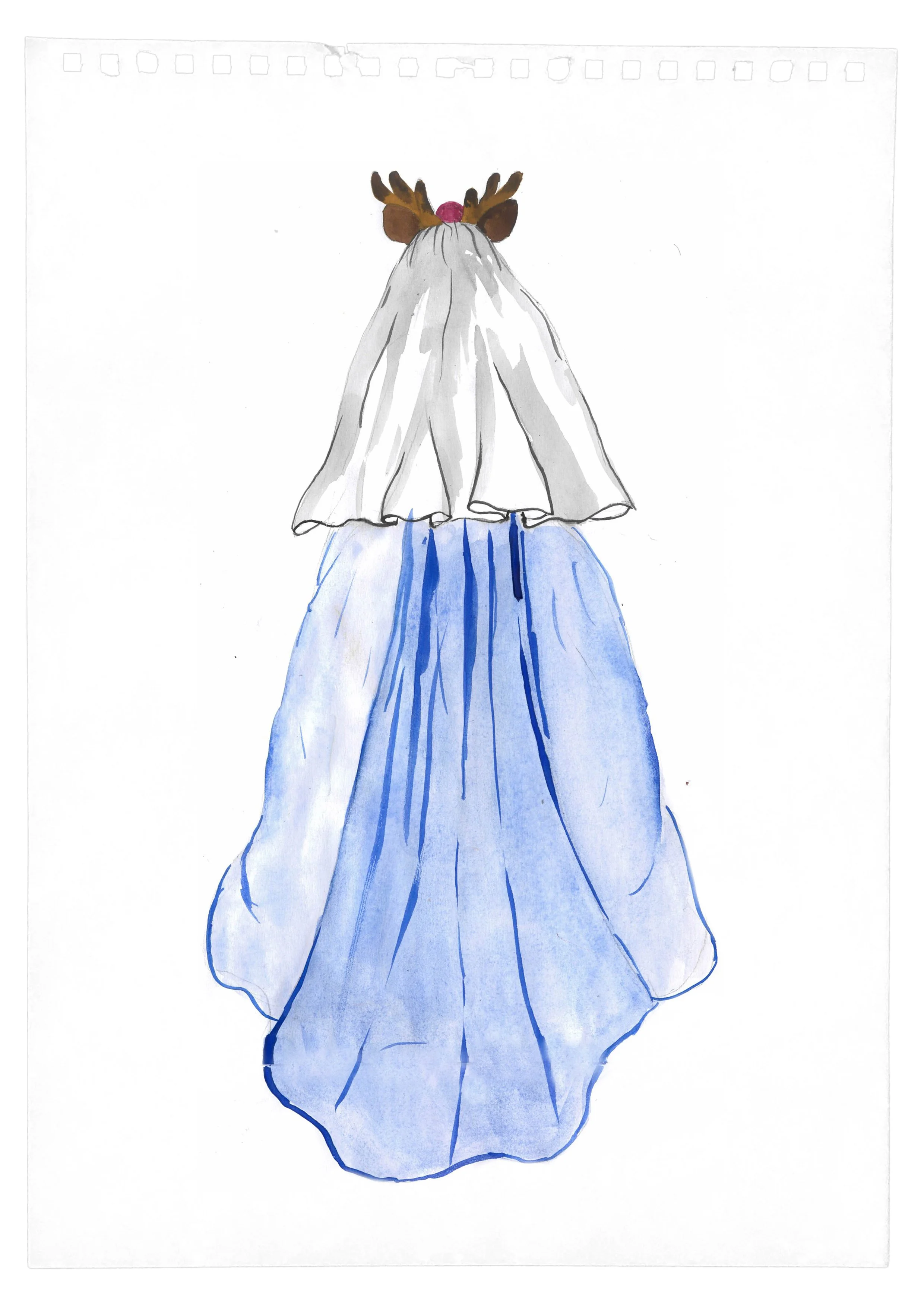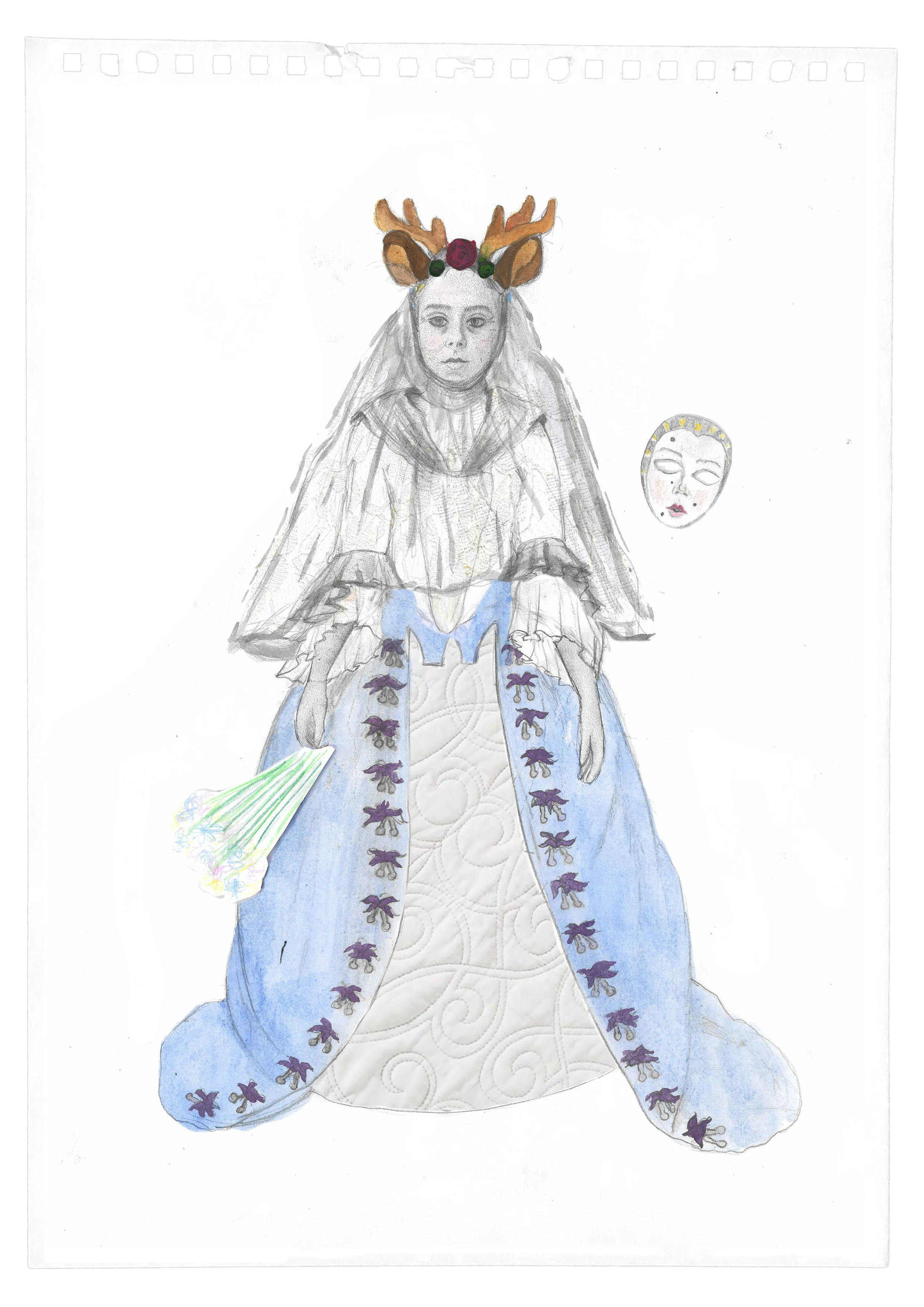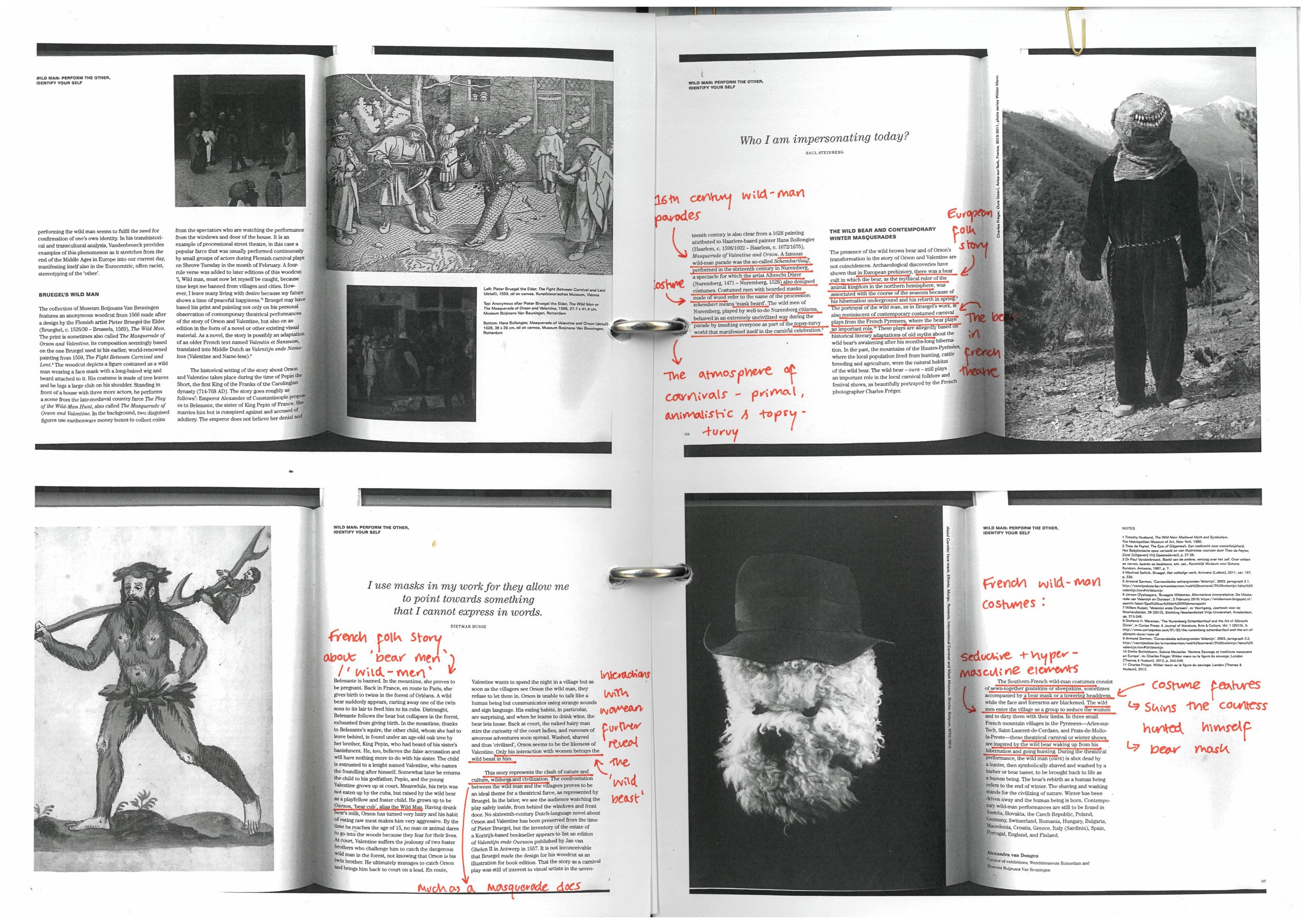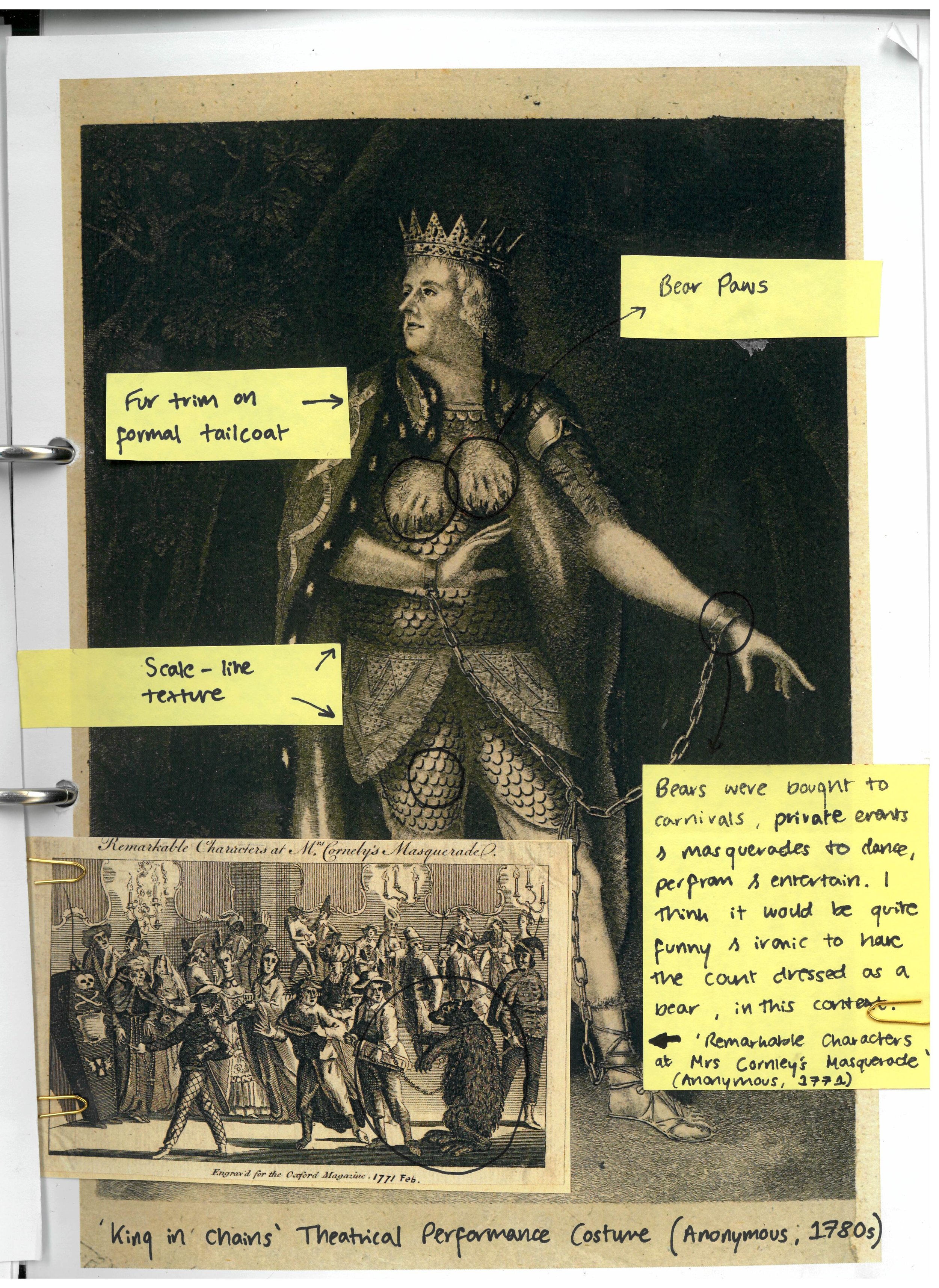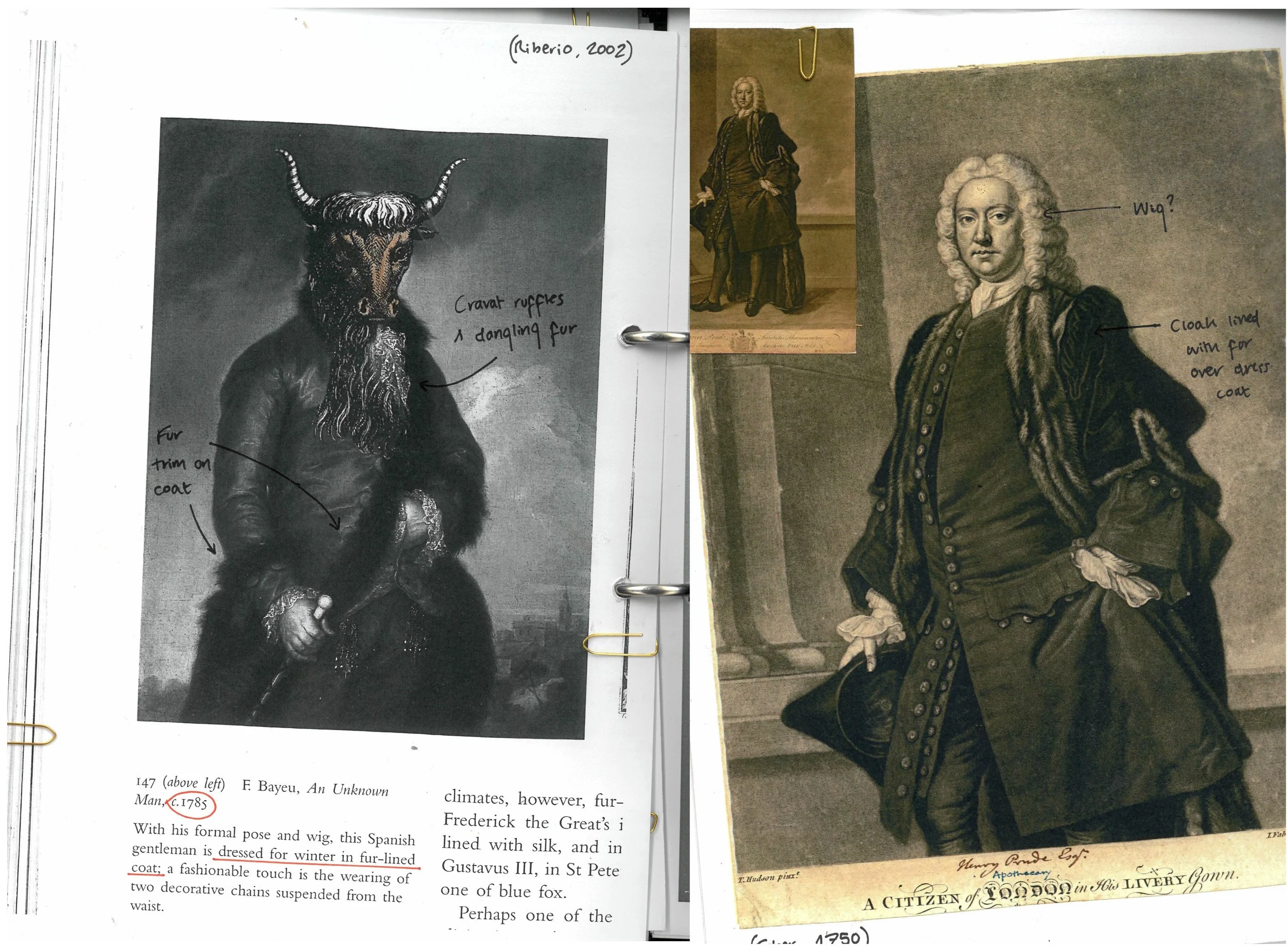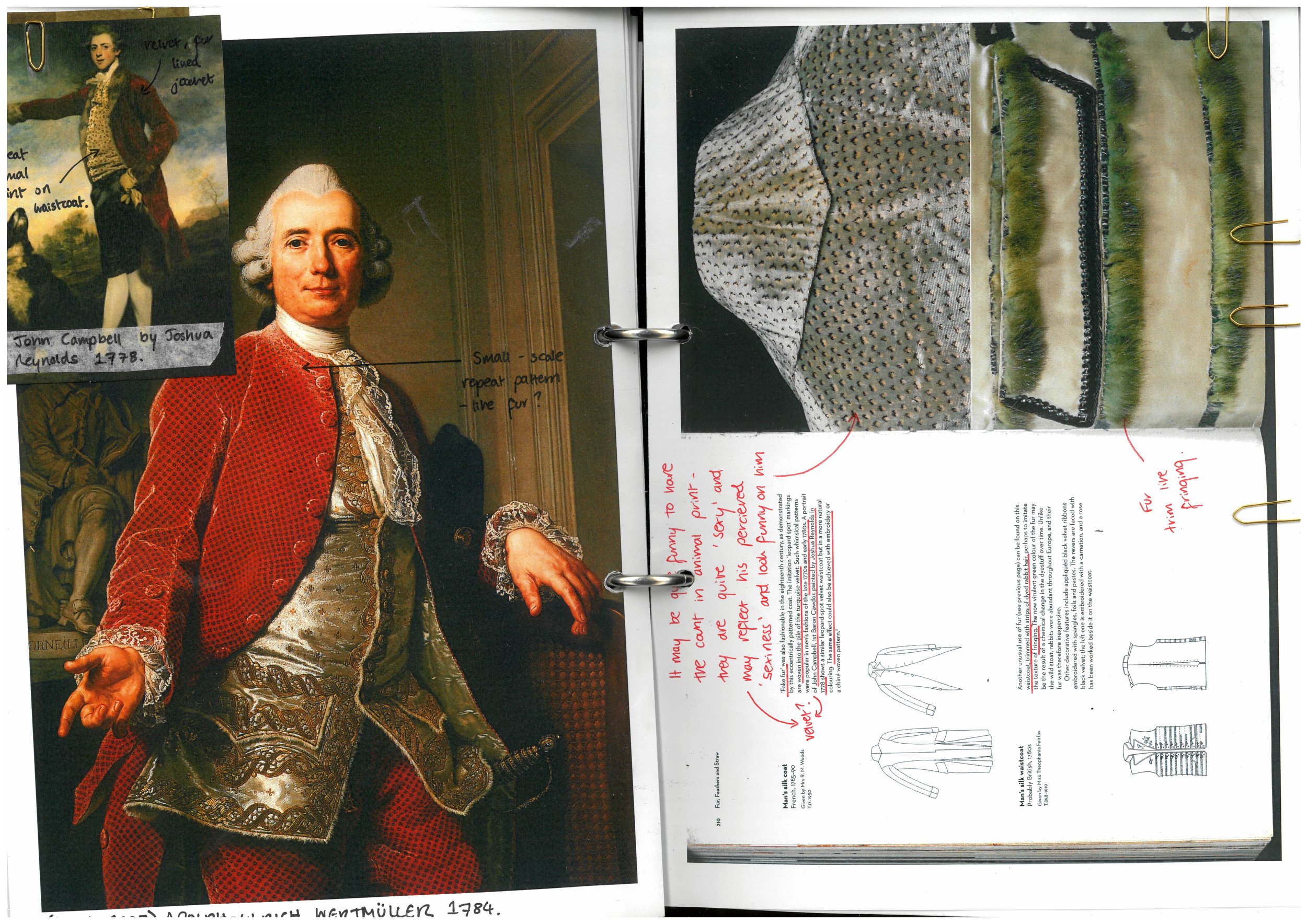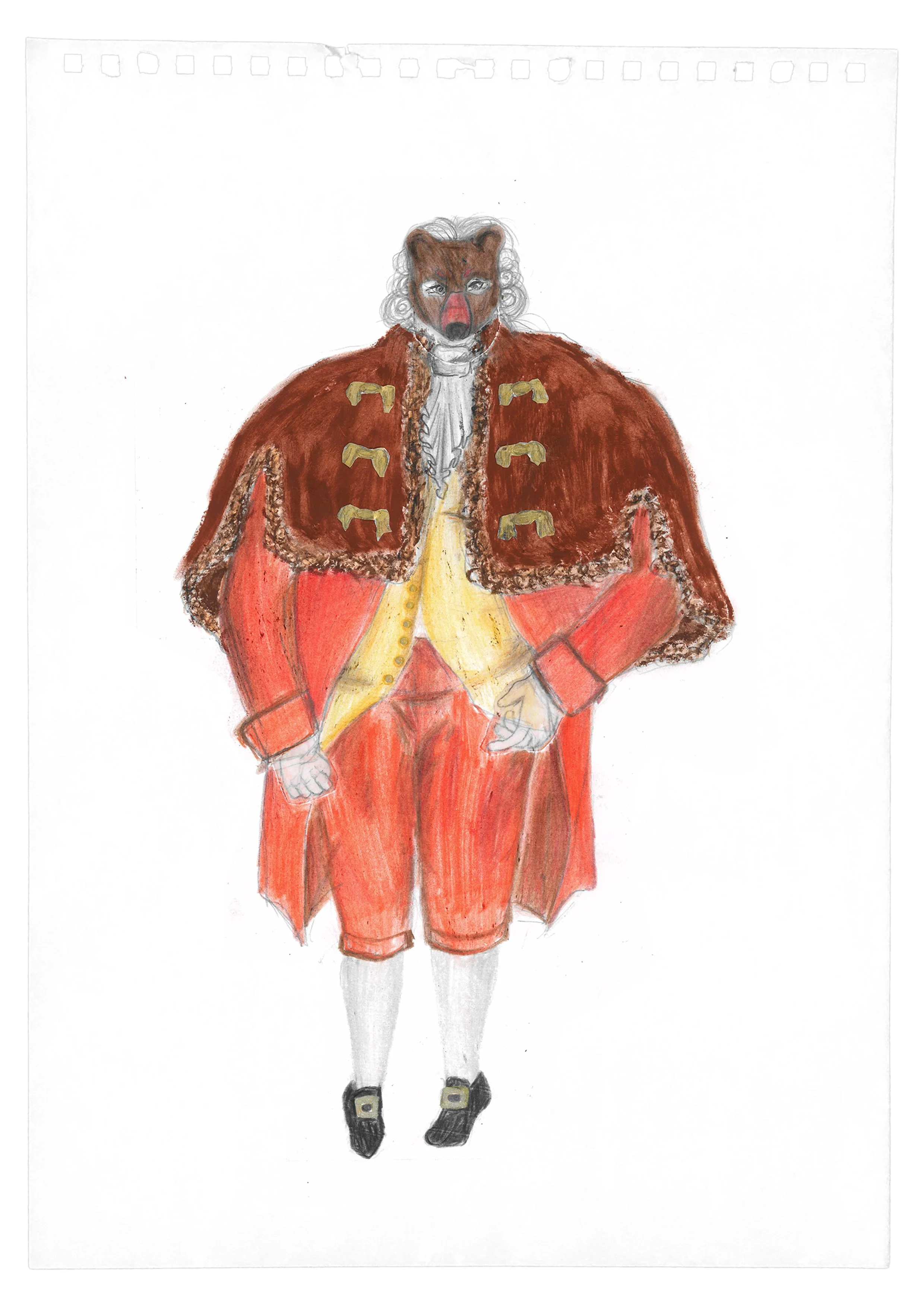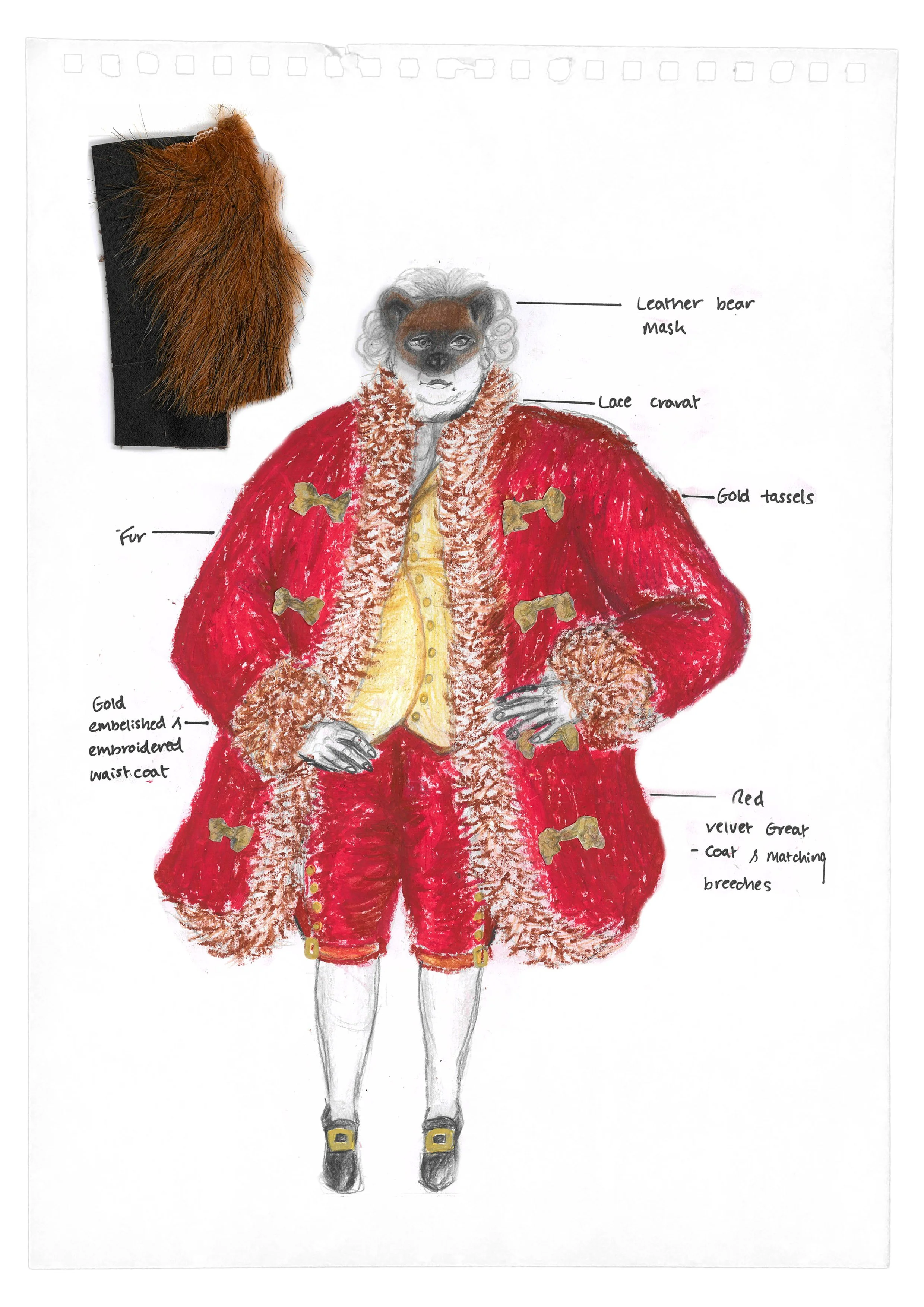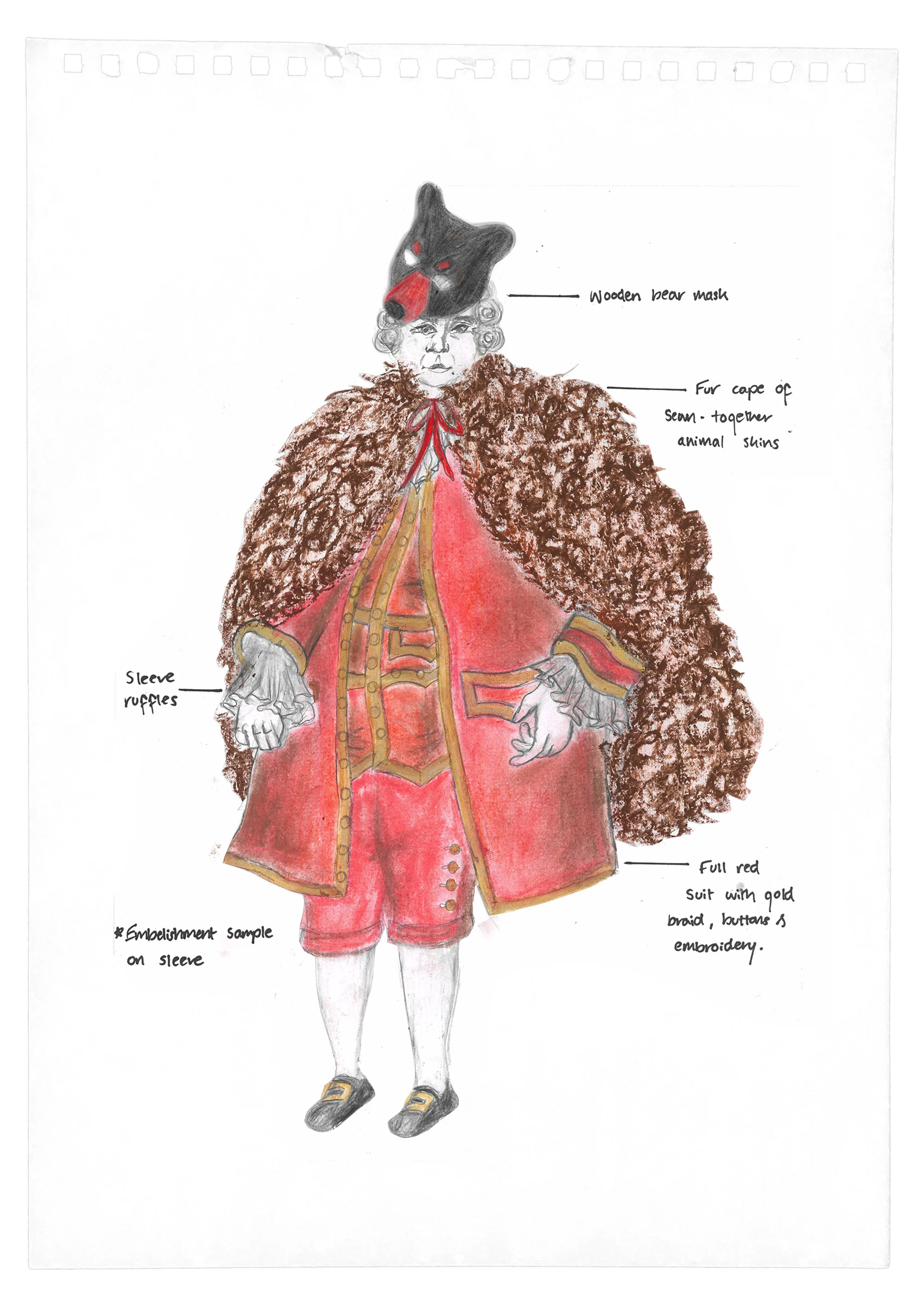The Marriage of figaro
For this project, We were tasked with taking an opera and reimagining it in our own creative direction. We had to come up with three character designs and an embellished pattern piece for one of them. We were told to use tailoring and embellishment to investigate how to provide opportunity for story telling, revealing or concealing narratives, and commentary on gender representation within costume.
1760-65 French suit. The Cut of Men’s Clothes (Waugh, 1964).
World Board
The Marriage of Figaro’s second name is “The Day of Madness”.
When: Set in late 18th century France, just before the Revolution.
I want the atmosphere to be that tensions are rising, rules are being broken, and the nobilities are partaking in frivolous excess and over-consumption.
What: I am setting the final wedding scene as a masquerade to encompass the illusion, confusion, disguise and subversion that unfolds in the story, and the festivities of the last scene. Eighteenth century masquerades often included men dressing up as women and vice versa, and the nobilities in fancy dress as lower-class roles (such as a maid), which aligns with the events of the Opera.
Where: A Chateau’s garden, in a slightly overgrown Maze - to enhance and exemplify the confusion and illusion in the last scene of the Opera.
Libretto Breakdown
Conducting a breakdown helped me understand and analyse the circumstances of each scene, including which characters were present, the locations and what takes place. This meant I could easily pick which scene I would undertake and make initial suggestions on how I could interpret it. I picked the final scene in which the wedding takes place, and multiple characters are in disguise.
18th Century MASQUERADES
cherubino
Cherubino is…
Mezzo-soprano
the Breeches role - a young boy played by a female opera singer
Lower class, the count’s page boy
Around 17 years old
Handsome and beautiful
Quite small, skinny, perhaps clothes wont fit him properLy
Immature, Slightly pathetic, Youthful Romantic, eager
THE DOMINO COSTUME
After my initial masquerade research led me to uncover that the ‘domino’ costume was a genderless and gender-concealing garment, I thought it would be a perfect costume for the ‘breeches-role’ character Cherubino.
the key components of Dominio: a cloak of silk, a tricorn hat, a mask and an optional veil for added concealment.
heavily embellished Domino’s would be rather expensive, so less rich attendees would rent them out. This may affect my design in that it would have pleating to suggest he borrowed one and had it tailored.
‘The practise of renting a domino from a warehouse was convenient – it could be done hours or days before the masquerade’ – this also validates Cherubino’S use of the costume, he was to be expelled from the Court and was not expected to attend the wedding so this would have been an easy costume for him to organise on short notice.
The domino is a disguise that would allow Cherubino to quickly return back into his role as a servant by simply taking off the cape and mask.
I reminded myself of the genre of the opera – comedy. It may be quite amusing for the audience to see Cherubino in a mysterious, handsome, almost heroic costume (the cape and mask mimicking a superhero’s outfit), as he believes he is charming and smooth, but everyone knows he is just a silly, cheeky and excited young boy.
reference images
18th century Servant Attire
beneath Cherubino’s Domino costume, he would be wearing his usual servant attire. Cherubino’s suit buttons and trim would be in red – the same colour as the Count’s coat of arms.
Initial designs
Final designs
the Countess as Susanna
the countess is…
the soprano
The Count’s neglected wife
45-50 years old
Lonely, Melancholic, Dignified, Smart, Loving, Beautiful, Determined
scheming with her maid Susanna, dressing up as her on her wedding day to catch the count in his infidelity.
18th Century wedding dresses
As the countess would be wearing Susanna’s wedding dress in this scene, I started my research into 18th Century wedding dresses.
the tradition of white had not yet been fully established. Blue was only appropriate to youth, and ‘at the French court, older women who wore blue were frowned upon’. This may be a good option to explore as it may be a colour Susanna may have worn, and also shock the Count even more when he discovers that it’s his (older) wife who’s wearing it.
I decided I would keep the dress mainly white, as not to confuse the audience even more during such a chaotic scene.
I could only find one description of lower middle-class wedding dresses in Dress in France in the Eighteen Century: ‘The bride had to be dressed in an off-the-shoulder gown, with her hair dressed and her makeup (including beauty spots) in place […] her dress would be exceedingly lavish, and coloured’ (Stevenson, 1978).
This account proceeded to explain that veils had not yet started to be worn, instead a cap, a wreath or lace bands hanging from headdresses were worn, and even went as far as to reference Susanna’s ‘bride’s hat’ as an example.
next, I would research what female maids wore in the 18th century and establish how I could take inspiration from these reference images and design a wedding dress that would be more suitable for a lower-class woman.
Costume and disguise
As my research had led me to believe that veils were not yet worn by brides, I did some research to find an alternative, as I knew that she needed something appropriate to conceal her face to disguise her. I then remembered that during my Domino costume research for Cherubino, I saw images of shorter, sheer capes that mimic a veil.
I also saw that it was popular at a masquerade for women to have a life-like mask covered in beauty spots and makeup, which could also be a suitable disguise.
I recalled how the Count goes hunting in an earlier scene. for her masquerade costume, I thought she could be a deer: a beautiful, elegant animal that the Count seeks and hunts, but also one that can defend itself – a symbol of Susanna’s and the Countess’s plot against him.
What 18th Century Maids Wore
Initial designs
Final Designs
The Count
the count is…
The Baritone
The master of the house
50-60 years old
Jealous, Exploitative, Aggressive, Hypocritical, Entitled, Proud, Unfaithful
Flirting with his wife’s young engaged maid.
18th Century Menswear
In the late 18th century, men wore shorter waistcoats, less flared-out coats, and breeches with a “fall”. Fine suits were made from either velvet or ‘silk fabrics in small-scale repeat patters’ and many were ’further embellished with applied braid and decorative buttons.’ (Baumgarten, 1986).
‘Elaborately embroidered suits were worn by wealthy men on formal occasions’ with embellishments consisting of ‘silk threads, often adding gold, silver and precious stones’ as ‘visible indicators of wealth and status’. (Baumgarten, 1986). These findings were crucial to influence the design of the Count’s costume.
The fashionable silhouette after the 1770’s was ‘tall and slim’ (Ribeiro. 2002). The Count is a stylish, rich man who tries to keep up with al the fashions, however, I want his elaborate clothes to fit too small on him – as if he’s tried his best to fit into the new style, but it does not suit this ridiculous old man.
Masquerade Costume – ‘The Wildman’
Building upon my original idea to have the Count in a costume made of the skins and furs of animals he has hunted and killed, I did some research into the history of animal costumes at masquerades using The Power of Masks (Beirendonck, 2017):
“The lively biography of the mask and masquerades as a universal phenomenon, with which the transformation of identity reveal s complex social relations and fields of tensipn, is fascinating. Thus, the European wild-man masquerade stages a mystical being that is both bear and human being, one that straddles the border between nature and culture, between wildness and civilisation.”
There is a wild-man French folk story in which this character orginiates, suggesting that this may be a popular French costume at a masquerade. In the story, an abandoned child is raised by bears, and appears half bear half man. He returns to civilisation and shaves the fur off his skin, but the man’s “interaction with women betrays the wild beast in him”.
This research described the costumes of wild-man parades in the sixteenth century in Nuremburg. They included “bearded masks made of wood” . During the carnival, the men “behaved in an extremely uncivilized way […] as a part of the topsy-turvy world that manifested itself in the carnival celebration”.
It describes the southern-French wild-man costumes: “sewn together goatskins or sheepskins, sometimes accompanied by a bear mask and a towering headdress” explaining that “the wild men enter the village as a group to seduce the women”. This costume is clearly seeped in a history of seduction, aggression, and hyper-masculinity which reflects the greedy, primal and lustful character of the Count.
Design development
After some exploration, I decided I would follow the tradition of the ‘Wildman’ in that the Count would be half-man, half-bear. I started to reflect back onto the genre of the opera – comedy. I think it would be funny to have the Count in a bear costume as a symbol of his perceived masculinity and ego, perhaps with added horns as a phallic reference to his primal libido - hopefully this would humour the audience. Bears in the 18th century were bought to carnivals, private events and masquerades to dance, perform and entertain. As well as symbolising the primal wild-man, I think it would be quite funny and ironic to have the Count dressed as a bear, in this context.
Fur in 18th Century Menswear
Embellishment Design Development
This is a women’s 1760’s French silk mantua that had both real tufts of ermine fur and embroidered ‘tufts’.
This 1780’s men’s silk waistcoat of French embroidered silk is edged with a fur strand-like embroidery.
The tassels on this British 1770’s men’s wool coat could also add to the fur tuft motif.
Initial designs
Final Designs
final Embellish- ment design
Digitally embroidered fur-like appliqued trim, with hand sewn ‘furry’ embroidery (Turkish rug stitch) in darker colour on top to make it tactile and fluffy.
Small-scale repeat digital embroidery fur ‘tufts’.
Gold buttons and tassels embroidered with sequins and beading, inspired by the features on the 1770s embellished coat and 1760s waistcoat (Davis and Landes, 2000).
samples
